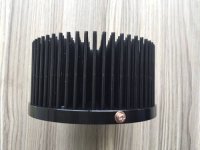jikko77
Active member
chill a bit, will you?
this is what you wrote:
this is what i've added:
the answer wasn't meant to you. but whatever...
then you quoted:
it apply to mono with a specific wavelenght not on the cob. period. so this isn't true.
there is the second missinformation.
even this doesn't apply to the cob we are talking about.
and i've just quoted a piece of cree datasheet:
let me add something else:
thisi s regarding the meanwell driver with "b" inside their name:
the pwm signal come out just from the dim+ and dim-, not the v+ and v-.
those are two separate line. period.
the cob are attached to v+ and v- not on the dim cable. check the dam v+ and v- the do not change, by so much, the voltage output but they change the ampere the cob get!
the voltage on the v+ and v- is it the same, it may change in function of the current and temperature the cob are at.
i think you are failing to gasp how it work.
HLG-240H-C (just to name one) series is a 250W LED A~C/DC LED driver featuring the constant current mode and high voltage output.
...HLG-240H-C is equipped with various function options, such as dimming methodologies, so as to provide the optimal design flexibility for LED lighting system.
in fact:

this is what you wrote:
They don't decrease the current being delivered to the cobs, they switch the full current and voltage on and off many times a second, just as if someone was standing at the light switch flicking it on and of as fast as they can, except faster.
this is what i've added:
regarding pwm it is pulsed, it is modulated.
it's a square waveform with a cycle on (usually 5v) and a cycle off (0v), what you do is switching between 5 and 0 v in a certain period of time, with a 100% output we have a steady line on the on cycle, while if we put it to 0 we have a steady line on the off cycle.
the example of someone flickering with the on/off switch get a clear picture of how it work.
the answer wasn't meant to you. but whatever...
then you quoted:
A benefit of the PWM method is that it enables dimming with minimal color shift in the LED output.
it apply to mono with a specific wavelenght not on the cob. period. so this isn't true.
During dimming, the LEDs are still operated at the same voltage and current as during full light output. In addition, lamp life is not affected by dimming, as is sometimes the case with frequently dimmed fluorescent lighting. Rather, dimming LEDs may lengthen the useful life of LEDs, because dimming can reduce operating temperatures inside the light source.
there is the second missinformation.
even this doesn't apply to the cob we are talking about.
and i've just quoted a piece of cree datasheet:
the lamp isn't affected by dimming isn't complitly true.
maybe a vdc signal is less invasive than the pwm one, but the pwm can shorten the cob life:
"The Applications Engineering team at Cree is often asked
whether it is safe to operate Cree XLamp® LEDs with pulsed
currents above the maximum data-sheet rating. This question is
usually asked in the context of legitimate product requirements
such as those posed by emergency-vehicle applications,
specialized stroboscopic illumination and even pulsed
modulation for general-illumination dimming applications.
The short answer is “it depends.” Multiple variables affect both
initial and long-term performance and reliability of an LED.
These include thermal resistance, pulse duration, as well as
current amplitude, frequency and duty cycle."
let me add something else:
I wasn't talking about the PWM signal input used to control the dimmer, I was talking about the PWM signal that comes out of the dimmer that lights the LED COBS eg. a PWM of 36V at 1400mA which pulses on and off many times a second.
I think people here are failing to grasp that dimming LED drivers don't output DC to the LED COBs, they output a PWM at the full 1400mA current, or whatever current the driver is rated at. In other words, if you dim the driver to 50% power, it's still putting out 1400mA, that doesn't change.
thisi s regarding the meanwell driver with "b" inside their name:
the pwm signal come out just from the dim+ and dim-, not the v+ and v-.
those are two separate line. period.
the cob are attached to v+ and v- not on the dim cable. check the dam v+ and v- the do not change, by so much, the voltage output but they change the ampere the cob get!
the voltage on the v+ and v- is it the same, it may change in function of the current and temperature the cob are at.
i think you are failing to gasp how it work.
HLG-240H-C (just to name one) series is a 250W LED A~C/DC LED driver featuring the constant current mode and high voltage output.
...HLG-240H-C is equipped with various function options, such as dimming methodologies, so as to provide the optimal design flexibility for LED lighting system.
in fact:





